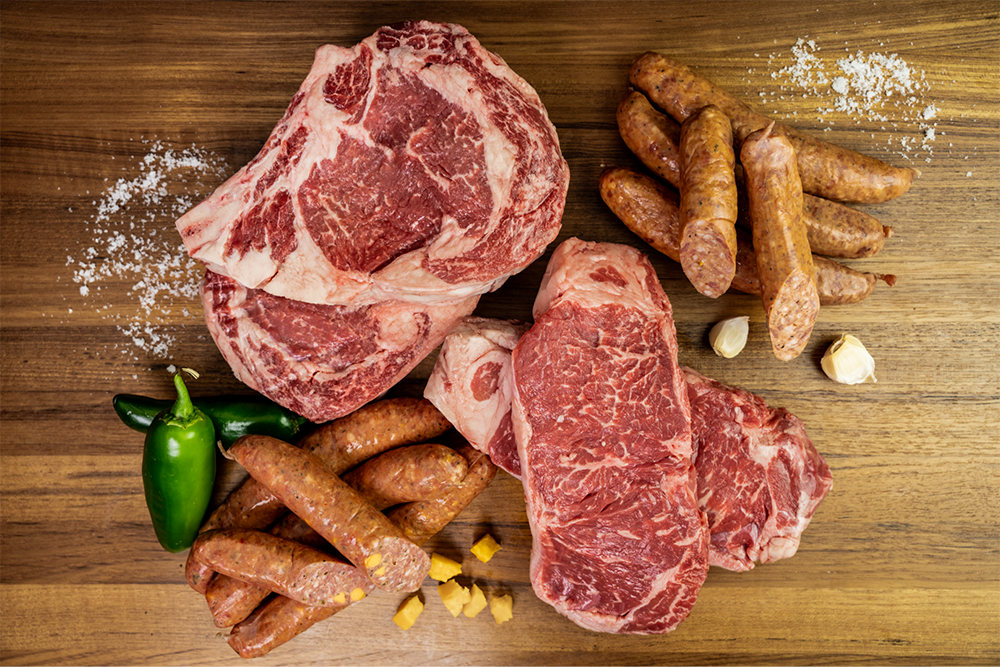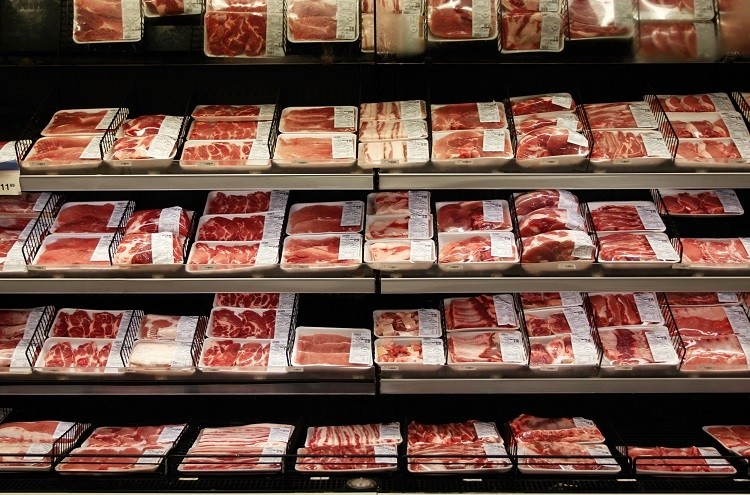Bagley Farms Meat Market Edwardsville IL: Your Go-To Destination for Local Meat Selection
Bagley Farms Meat Market Edwardsville IL: Your Go-To Destination for Local Meat Selection
Blog Article
Reveal the Art of the Butcher's Cut in a Modern Meat Market
In the ever-evolving landscape of modern-day meat markets, the butcher's cut has actually transcended its standard origins, merging age-old workmanship with modern methods. bagley farms meat market edwardsville il. Today's butchers are not simply processors of meat; they are well-informed craftsmens that highlight sustainability and ethical sourcing. Their knowledge in selecting and preparing cuts customized to certain culinary needs supplies an unparalleled eating experience. Yet, what genuinely sets the modern butcher apart is their capacity to create a deeper connection between customers and the origins of their meat. Just how do these masters balance practice with development, and what implications does this have for the future of meat usage?
Development of Butchery Strategies

The mid-20th century saw butchery methods additionally fine-tuned by scientific understandings right into muscle mass biology and meat aging, improving both tenderness and preference. Advancements like vacuum packaging and refrigeration expanded item shelf-life, allowing butchers to diversify offerings and boost high quality control. This period additionally noted the increase of specialized tools, such as band saws and meat slicers, which boosted precision and performance in meat processing.
The 21st century has presented digital technology right into the butchery realm. Digital systems now aid in monitoring animal provenance and maximizing cuts to satisfy specific consumer preferences. In addition, a renewal in artisanal butchery has actually emerged, mixing conventional abilities with contemporary knowledge to accommodate consumers looking for ethical and lasting meat options. This advancement underscores a vibrant interplay in between practice and advancement, meeting contemporary needs while preserving the craft's heritage.

Comprehending Meat Cuts

Comprehending the complexities of meat cuts is vital for both butchers and customers seeking high quality and value. Each cut comes from a different component of the pet, giving special flavors, textures, and cooking approaches. Proficiency of these differences not only boosts cooking experiences however also optimizes the energy of each carcass. For butchers, accurate cuts reflect ability and respect for the craft, guaranteeing minimal waste and optimum yield.
The primary classifications of meat cuts include primitive, sub-primal, and retail cuts. Primal cuts, such as the loin, rib, and chuck, are the huge sections initially divided from the carcass. Butchers then damage these down further right into sub-primal cuts, before ultimately producing retail cuts readily look these up available to consumers, like ribeye or tenderloin. Each phase needs mindful interest to physiological structure and muscular tissue composition.
Comprehending muscular tissue composition is critical; muscles made use of more often by the pet tend to be harder and are best matched for slow cooking approaches, while less-used muscles, like those discovered in the loin, are a lot more tender and ideal for grilling or roasting. Experience with these differences empowers consumers to make educated selections, boosting their culinary ventures.
Picking Top Quality Meat
Picking the right meat involves more than just picking an aesthetically appealing item from the display screen. The art of picking top quality meat calls for a critical eye and expertise of details attributes that signify quality and quality. To start with, focus on the shade; beef must have a brilliant, cherry-red color, while lamb must display a soft pink tone, and pork a light pink. This shows the meat is fresh and the original source hasn't been revealed to oxygen for as well long.
Second of all, think about the marbling, which refers to the white streaks look at this website of fat within the muscle mass. Correct marbling is a crucial indicator of inflammation and flavor, as it thaws during food preparation, improving the meat's juiciness. Remember, greater marbling typically correlates with superior quality cuts, such as USDA Prime.
Appearance is one more critical aspect; meat should really feel firm to the touch, not slimed or overly soft. Furthermore, be mindful of the fragrance. Fresh meat should have a tidy, neutral smell, complimentary from any sour or repulsive smells.
Matching Cuts With Food Preparation Methods
Effectively coupling cuts of meat with the appropriate cooking techniques is necessary for attaining optimal flavor and texture. These techniques improve the meat's all-natural tastes and make certain a juicy coating.
On the other hand, harder cuts like brisket and chuck roast are abundant in collagen, which damages down right into jelly when cooked slowly. These cuts are suitable for braising or slow-moving roasting, permitting the meat to soften with time and create deep, intricate tastes. In a similar way, cuts such as brief ribs and pork shoulder prosper with slow-cooking approaches, where expanded cooking times change their robust structures into succulent dishes.
Lamb shanks and oxtail, which call for long term food preparation to tenderize, are ideal candidates for cooking or slow-moving simmering. These techniques coax out rich, hearty tastes while keeping moisture. By understanding the special attributes of each cut, chefs and home cooks alike can raise their culinary creations, making sure each meal is both pleasing and unforgettable.
The Butcher's Role Today
Navigating the progressing landscape of the modern meat market, the butcher's function today extends past mere prep work of cuts. Contemporary butchers are cooking artisans, instructors, and advocates for lasting practices.
Along with crafting precise cuts, butchers currently involve directly with clients, offering cooking recommendations and tailoring choices to match individual requirements and choices. Their experience in meat aging, marbling, and flavor accounts encourages consumers to make educated choices, enhancing their culinary experiences. This tailored service exhibits the butcher's advancing role as a relied on expert in the kitchen.
Additionally, butchers are pivotal in reducing waste, making use of whole animals to produce varied items such as sausages and stocks - bagley farms meat market edwardsville il. This detailed approach not only appreciates the pet yet also aligns with contemporary sustainability objectives. This way, the modern butcher embodies both custom and innovation, adapting to an ever-changing market while preserving the creativity and stability of their craft

Verdict
Proficiency in comprehending varied meat cuts and high quality indicators empowers butchers to supply informed recommendations, straightening certain cuts with optimum cooking techniques. By recognizing historic techniques while embracing modern needs, the butcher's role stays vital in today's advanced meat market.
Report this page